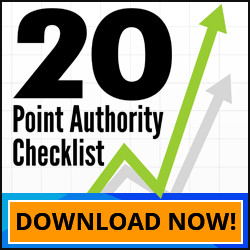Building a website can be likened to building a house. If you want it to be sturdy enough to stand the test of time, it must have reliable architecture that meets industry standards. I bet you’ve never referred to a website in engineering terms, so I doubt you know the main points used to evaluate your site architecture. Check out the list below for a quick lesson on doing it the right way!
Check Site Canonicalisation
So, what does canonicalisation mean? In layman’s terms it’s the presence of multiple URLs through which similar content can be accessed. This happens when your home page URL, for example, has both a www and a non-www version. The solution to this is to have a singular, consistent URL format. If this is a current problem of your website, simply use 301 redirects to solve the issue.
Duplicate Content Review
Duplicate content is considered regardless if it’s on site or offsite. On site duplicates include the presence of similar content within the pages of your own website. These may take the form of title tags, meta descriptions, page content, among others. The offsite duplicates, on the other hand, happen when your webpage content is spotted on another website’s page (so it looks like you aren’t the original creator of your content). This is hard to deal with but using tools like Copyscape can help you sort through it.

It can be a bad thing to have duplicate content.
Assess Flash And JavaScript Content
Did you know it’s much easier for Google to crawl content in plain HTML format than those in Flash or JavaScript? If you want your website to be more visible in the eyes of the search engines, stay away from the said formats and concentrate more on HTML platforms.
Check Lengthy URL Parameters
Having a website URL that is simple and easy to remember is good for the users – which means it’s good for Google. Remember, even though search engines can now index lengthy URLs quite well, it’s the users who will still have a hard time memorising them.
Review Poor Internal Linking
Keep in mind what users want to know or see more about you once they land on any of pages. It’s good to have your posts or content with similar themes or topics gathered together – and a link to more or related information. For example, right after one post, create a list of suggested links to other pages in your website with similar topics. Also make sure your visitor is never more than just a few clicks away from your home page.
Have the right website architecture must be a top priority if you don’t want any possibility of receiving penalties from Google. Indexing issues, such as not actually having your site indexed in the search results, can be easily solved if you work through these steps.
Analysing your website structure is part and parcel of a healthy website check-up, and we suggest you do one right away. But we understand there’s not always enough time in the day to do things which aren’t your main focus, so we’re here to help if you need us! For more information about performing a site check-up for successful Results, click here today.


